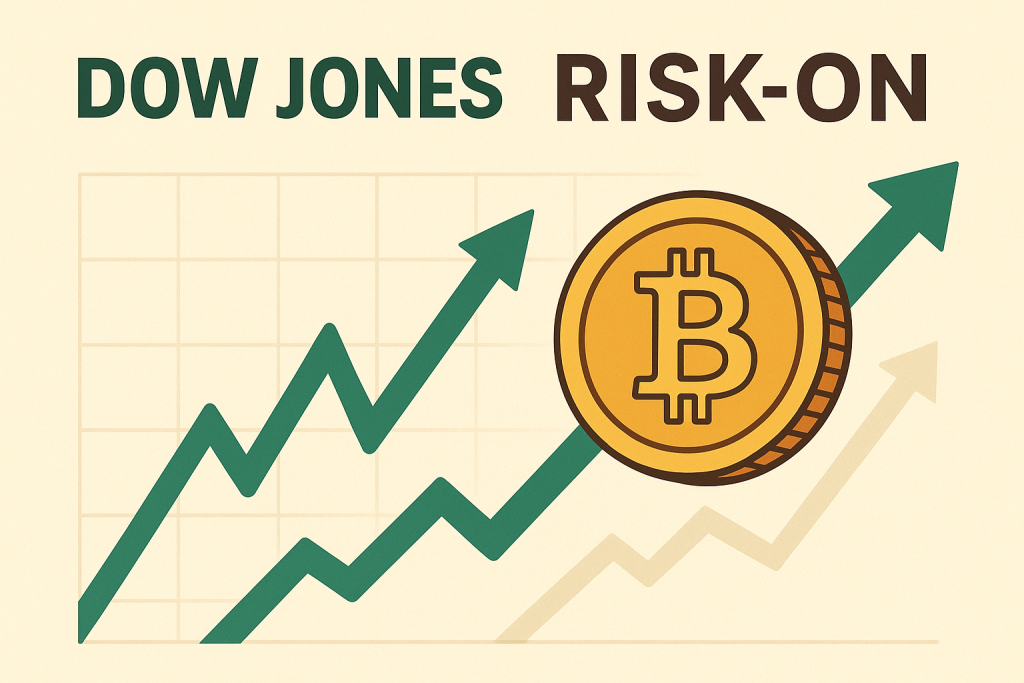In 2025, investors are closely watching the interplay between the Dow Jones Industrial Average and Bitcoin as the market experiences a pronounced risk-on cycle. Historically, risk-on periods—characterized by optimism, rising equity prices, and investor appetite for higher-risk assets—tend to benefit both growth stocks and cryptocurrencies.
Risk-On Dynamics in Traditional Markets
The Dow Jones, a benchmark of U.S. blue-chip stocks, often reflects overall economic confidence. When investors perceive lower interest rates, stable inflation, or strong corporate earnings, they tend to allocate more capital to equities. This shift toward riskier assets signals a “risk-on” environment, encouraging investments not only in stocks but also in alternative assets like cryptocurrencies.
Bitcoin’s Role in the Risk-On Cycle
While Bitcoin has been historically volatile, its correlation with traditional markets has strengthened during certain periods. In a risk-on scenario, traders often view Bitcoin as a high-reward asset, supplementing their portfolios with crypto exposure. Conversely, during risk-off phases—when fear dominates the market—Bitcoin prices often retreat alongside equities, highlighting its emerging role as a market sentiment indicator.
Correlation Trends Between Dow Jones and Bitcoin
Data from recent quarters show intermittent alignment between Bitcoin and the Dow Jones. Positive macroeconomic news or technological adoption milestones in crypto can drive simultaneous gains, emphasizing the interconnectedness of traditional and digital financial ecosystems. Investors are increasingly using these correlations to inform portfolio diversification and risk management strategies.
Takeaways for Investors
Understanding the risk-on cycle is crucial for both traditional and crypto investors. Watching indices like the Dow Jones can provide clues about market sentiment, helping traders anticipate potential movements in Bitcoin. However, market participants should remain vigilant, as correlation patterns are not guaranteed and can shift with macroeconomic changes.


